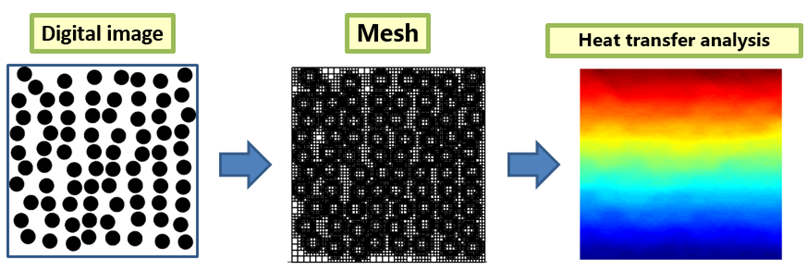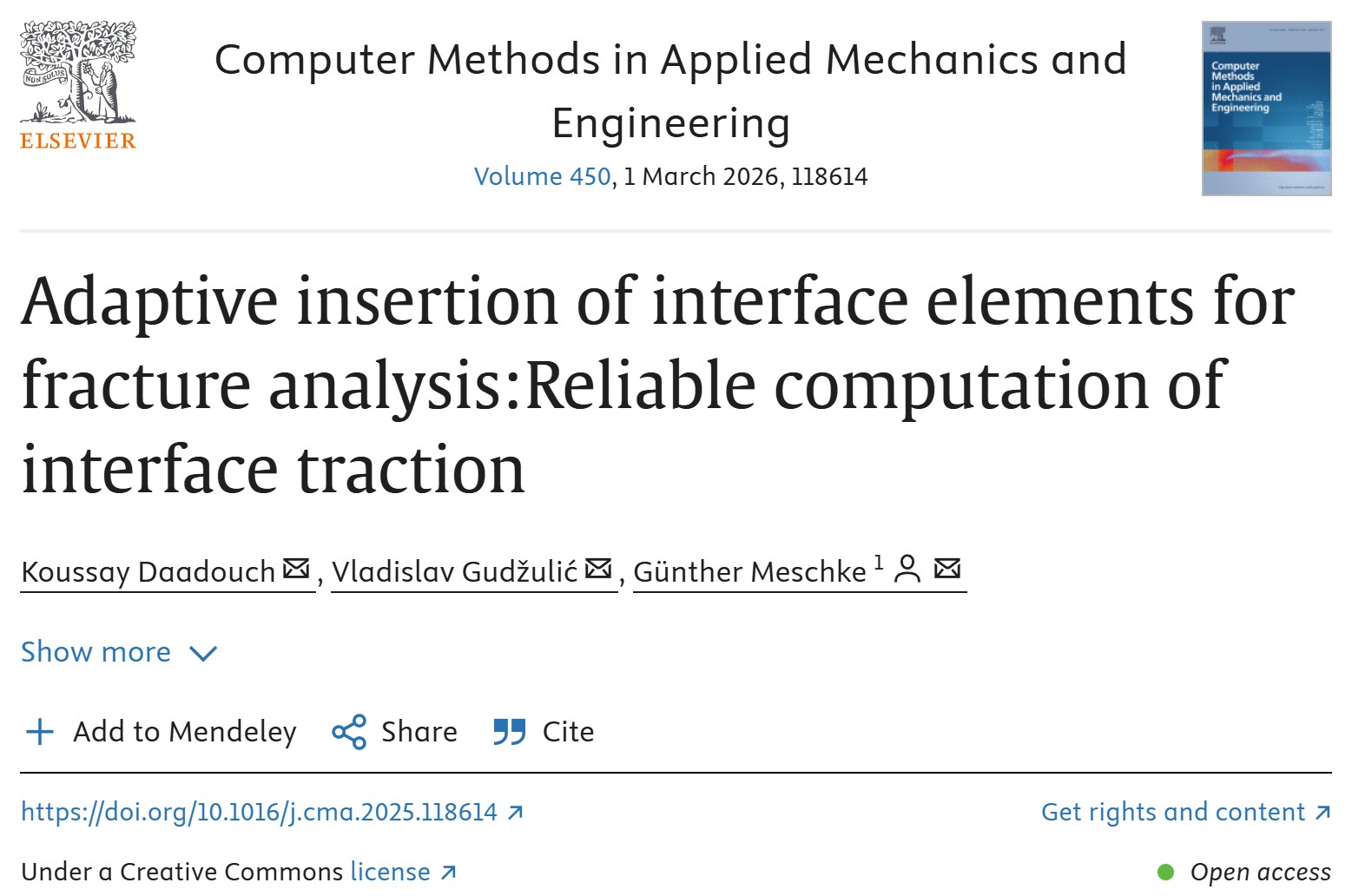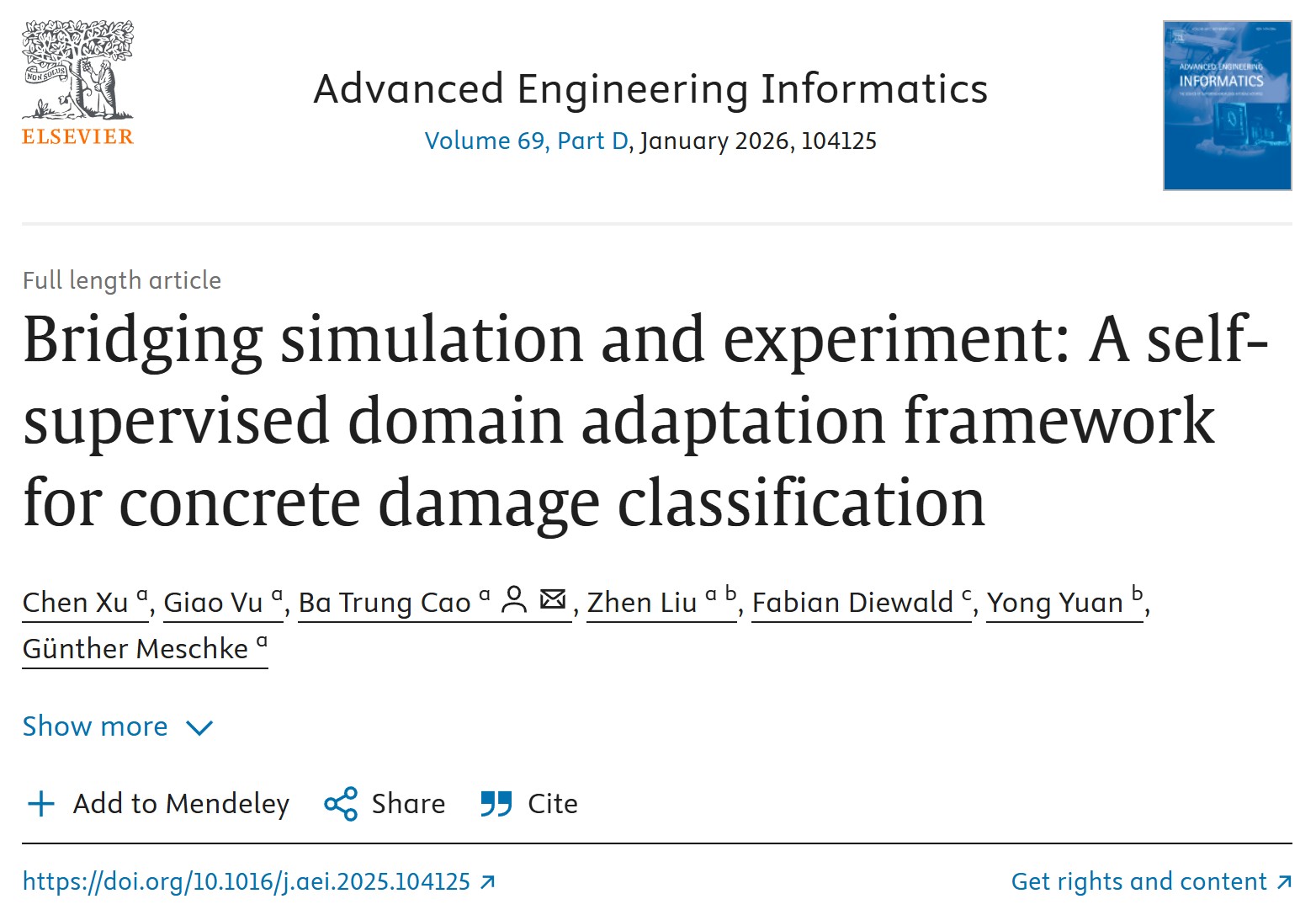
07.12.2017
Dr. Yiqian He from the Dalian University of Technology, China, will hold a guest lecture in the framework of SFB 837 about 'Image-based numerical prediction for effective thermal conductivity of heterogeneous materials: A quadtree based scaled boundary finite element method'.
The evaluation of Effective Thermal Conductivity (ETC) for heterogeneous materials is of interest in many heat transfer applications. For example, the ETC is proved to be one of the most important parameters in packed beds, metal foams and sponges, functionally graded materials, granular materials and fibrous porous materials, etc.
In this talk, a new framework that centres about a quadtree based scaled boundary finite element method (SBFEM) is developed for the heat transfer analysis and the estimation of ETC. Two significant advantages of the proposed methods includes:

"Adaptive insertion of interface elements for fracture analysis: Reliable computation of interface t
more...
Chen Xu, Giao Vu, Ba Trung Cao, Zhen Liu, Fabian Diewald, Yong Yuan, and Günther Meschke are the au
more...